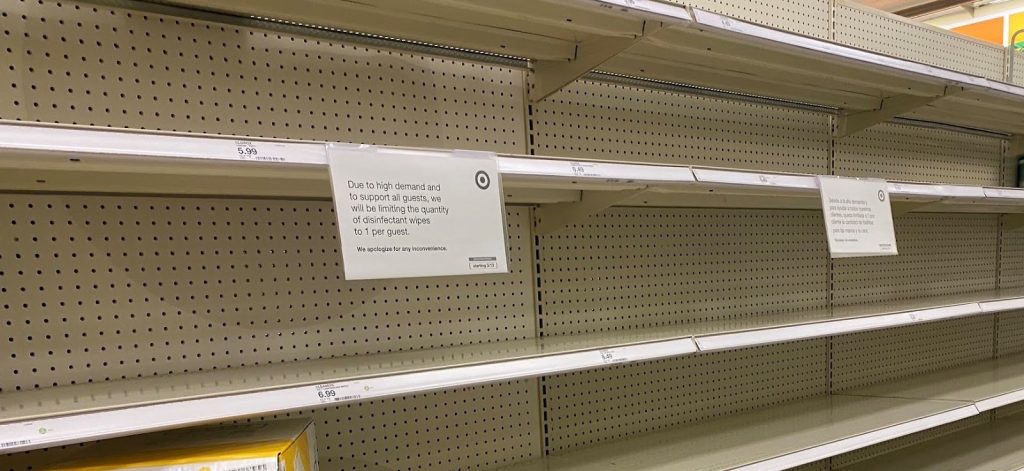The next retail experience, shaped by the online experience.
Our behavior has changed. I’m not talking about wearing masks in public or finding an alternative to handshakes, either. It’s the way we think about shopping and
purchasing products that has changed.
For many retailers, a solid ecommerce presence was their savior as the novel coronavirus (COVID-19) pandemic forced customers to online, touchless and digital commerce. Although that behavior shift was borne from the necessities we face during the pandemic, it only forced forward what was already naturally happening. And I believe many of these behaviors will stick around long after the pandemic recedes.
With any new customer behaviors come new opportunities and expectations. Many consumers will find their needs met online; however, retail environments will continue to exist. Importantly, digital signage will be there to meet many of our needs within in-store environments.
Compliance & Consistency
In the beginning, customers were tolerant of the changes that public-health authorities and politicians forced them to make to survive. Everyone was empathetic in light of a systematic change we all were experiencing together. However, with that time passed, customers are beginning to have choices again. As many begin to come into stores after having been online for months, they expect messaging to be on par with what they have been experiencing online. It must be up to date and relevant.
Compliance and consistency in messaging are the nuts and bolts of digital signage. The mainstay of digital signage is simple: Your messaging will be up, on time, in a manner consistent with your plans, without physically having to change print materials.
Adaptable
COVID-19 exposed a weakness in retail—namely, its difficulty adapting to a fast-changing environment. One-way aisles? Conveying messaging about COVID-19 etiquette? Rationing and product limitations? Scarcity of toilet paper? Relocation of the available toilet-paper inventory. Traditional means of in-store communication just fell flat. Makeshift notes, stuck with Scotch tape, represented a nice effort in light of the situation, but they were far less effective than they really had to be. By contrast, in the online space, customers were already used to icons and messaging providing information about availability, special considerations and other expectations.
Retailers and their partners can enable digital signage to change with the situation, driving messaging that instantly helps customers navigate the environment in the way you want them to. Properly designed content grabs customers’ attention and relays details to them in a timely manner. And if, in the future, there happens to be a situation similar to COVID-19, the ability to change messaging fluidly will allow retailers to set forth the rules put in place to ensure customers’ and employees’ safety.
New Avenues Of Thought
Being able to adapt isn’t just about trying to support services as they exist today; putting digital signage into your environment can also enable new avenues of thought about your business and help kick off innovations in communication. Communicating that you’re running out of a product is one thing, but what about coordinated messaging that promotes a new product or service? Digital signage lets you test different ways of communicating, easily enabling you to find the most effective one.
Post-COVID-19, customers will expect some level of personalization. In the online world, content and products are promoted based on customers’ specific purchase behavior and other data tracking. And, although that kind of one-to-one personalization is best executed through an app on a mobile device, digital signage can be used similarly, showing a more reactive and more granular message within retail. Integration with past, predicted or real-time data points can enable dynamic changes to the messaging.
One big opportunity is the rise of curbside pickup or buy-online-pickup-in-store (BOPIS). In general, BOPIS has shown itself to be fantastic and efficient. In such situations, however, how does a retailer communicate and entice for impulse buying? Messaging at the pickup location could be specifically targeted to the individual. At the very least, the retailer knows the customer’s selected items. And, if the shopper participates in any loyalty programs, the retailer knows even more. Digital signage placed at these locations could change based upon that knowledge, enticing the customer to add “quick pickup” of items of interest.
The COVID-19 pandemic has exposed some shortfalls within retail, but it also revealed that customers are quite tolerant of varying methods of communication and action. Digital signage within retail isn’t new, but, in a post-COVID-19 world, retail will be very different from before. With more customers having shifted to online shopping, their expectations for the in-store experience have only grown. Digital signage is a way to enable experiences of the kind typically reserved for the online world.
More often than ever before, customers expect dynamic, timely and relevant content. In the world of AV integration, digital signage will clearly be one area of strength
and growth among so many that are shrinking.
To read more from Sound & Communications, click here.
